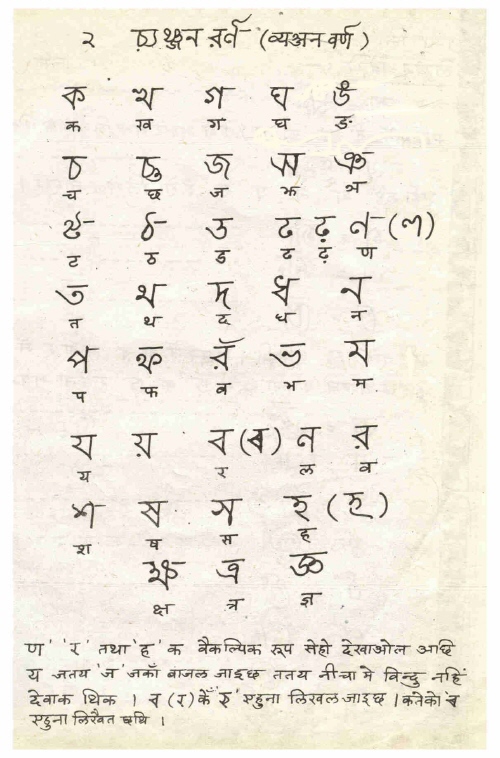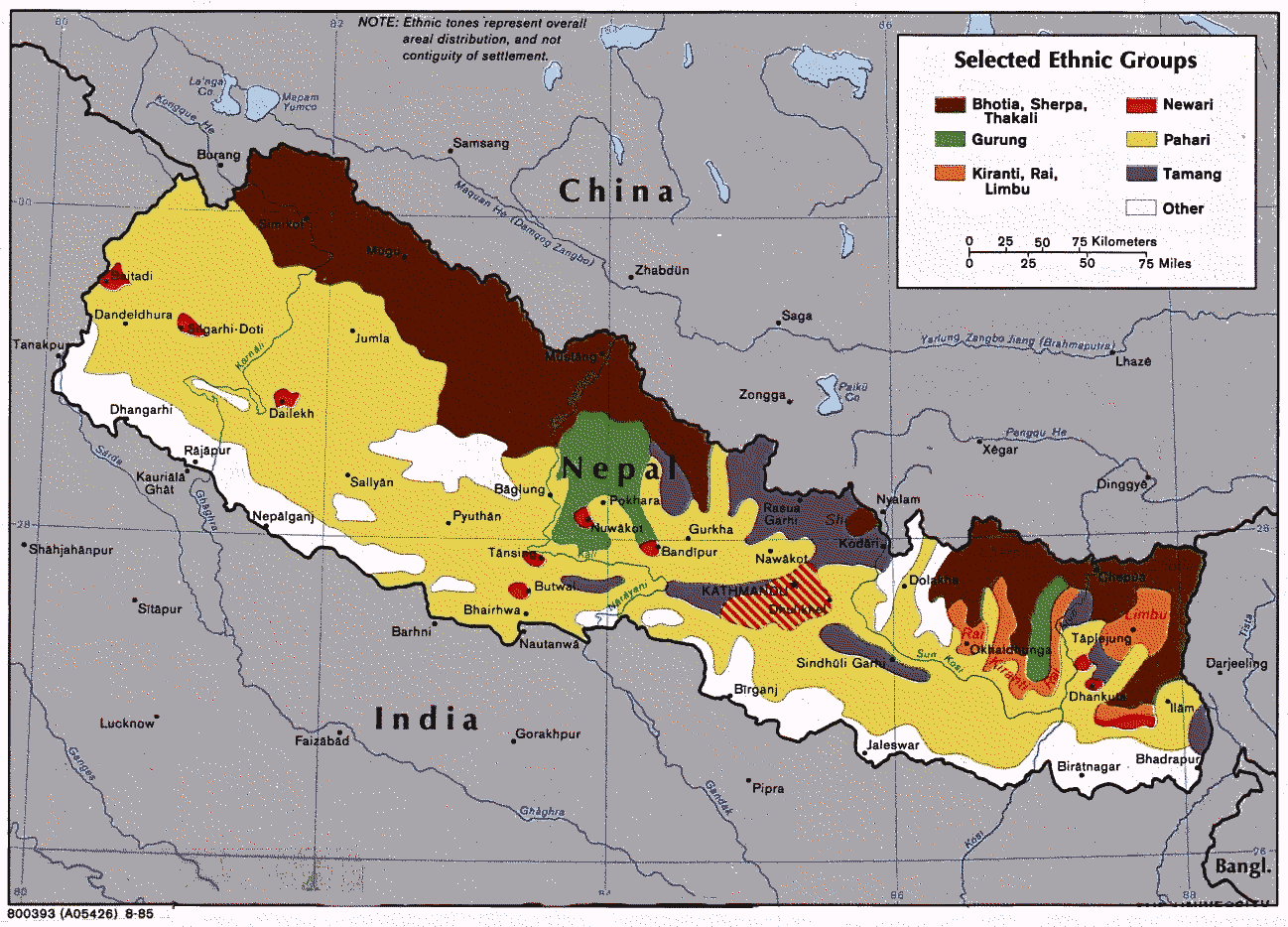|
Madhesh Province
, type = Province , image_skyline = , image_seal = Province No 2 emblem.png , image_map = Nepal Madhesh Province.svg , image_map1 = , mapsize1 = , map_caption1 = Map of Madhesh Province, Nepal , map_caption = Location of Madhesh Province , subdivision_type = Province of , subdivision_name = , seat_type = Capital city , seat = Janakpur , seat1_type = Largest city , seat1 = Birgunj , governing_body = Government of Madhesh Province , leader_title = Governor , leader_name = Hari Shankar Mishra , leader_title1 = Chief Minister , leader_name1 = Satish Kumar Singh , leader_title2 = High Court , leader_name2 = Janakpur High Court , leader_title3 = Provincial Assembly , leader_name3 = Unicameral (107 seats) , leader_title4 = House of Representatives , leader_name4 = 32 constituencies , established_title = Formation , established_date = 20 September 2015 , area_footnotes = , area_total_km2 = 9661 , population_as_of = 2021 , population_total = 611460 ... [...More Info...] [...Related Items...] OR: [Wikipedia] [Google] [Baidu] |
Provinces Of Nepal
The provinces of Nepal ( ne, नेपालका प्रदेशहरू, translit=Nepālkā Pradeśharū) were formed on 20 September 2015 in accordance with Schedule 4 of the Constitution of Nepal. The seven provinces were formed by grouping the existing districts. The current system of seven provinces replaced an earlier system where Nepal was divided into 14 administrative zones which were grouped into five development regions. History A committee was formed to restructure administrative divisions of Nepal on 23 December 1956 and in two weeks, a report was submitted to the government. In accordance with The ''Report On Reconstruction Of Districts Of Nepal, 2013'' (), the country was first divided into total 7 ''Kshetras'' (area). # (Unnamed) # Madesh Kshetra # Bagmati Kshetra # Gandaki Kshetra # Lumbini Kshetra # Karnali Kshetra # Mahakali Kshetra In 1962, all ''Kshetras'' were dissolved and the country was restructured into 75 development districts; those distr ... [...More Info...] [...Related Items...] OR: [Wikipedia] [Google] [Baidu] |
Maithili Language
Maithili () is an Indo-Aryan language spoken in parts of Languages of India, India and Languages of Nepal, Nepal. It is native to the Mithila region, which encompasses parts of the Indian states of Bihar and Jharkhand as well as Nepal's eastern Terai. It is one of the 22 Eighth Schedule to the Constitution of India, officially recognised languages of India and the second most spoken Languages of Nepal, Nepalese language in Nepal. The language is predominantly written in Devanagari, but there were two other historically important scripts: Tirhuta script, Tirhuta, which has retained some use until the present, and Kaithi script, Kaithi. Official status In 2003, Maithili was included in the 8th Schedule, Eighth Schedule of the Indian Constitution as a recognised language of India, Indian language, which allows it to be used in education, government, and other official contexts in India. Maithili language is included as an optional paper in the Union Public Service Commission, UP ... [...More Info...] [...Related Items...] OR: [Wikipedia] [Google] [Baidu] |
Terai
, image =Terai nepal.jpg , image_size = , image_alt = , caption =Aerial view of Terai plains near Biratnagar, Nepal , map = , map_size = , map_alt = , map_caption = , biogeographic_realm = Indomalayan realm , global200 = Terai-Duar savanna and grasslands , countries =Nepal, India , elevation = , soil = alluvial , rivers = Sharda River, Karnali River, Gandaki River, Koshi River , climate = tropical savanna climate , animals = gharial, mugger crocodile, king cobra , bird_species = Bengal florican, lesser adjutant, swamp francolin, white-rumped vulture, Oriental darter, sarus crane , mammal_species = Indian rhinoceros, Asian elephant, gaur, blackbuck, tiger, leopard, jungle cat, fishing cat, leopard cat, smooth-coated otter, large Indian civet, Asian palm civet, small Indian civet, hispid hare , biome = , border = , borders = , area = , region_type = , coordinates = , geology = , conservation = , habitat_loss = , habitat_loss_ref = , protected = , protected_ ... [...More Info...] [...Related Items...] OR: [Wikipedia] [Google] [Baidu] |
Autonomy
In developmental psychology and moral, political, and bioethical philosophy, autonomy, from , ''autonomos'', from αὐτο- ''auto-'' "self" and νόμος ''nomos'', "law", hence when combined understood to mean "one who gives oneself one's own law" is the capacity to make an informed, uncoerced decision. Autonomous organizations or institutions are independent or self-governing. Autonomy can also be defined from a human resources perspective, where it denotes a (relatively high) level of discretion granted to an employee in his or her work. In such cases, autonomy is known to generally increase job satisfaction. Self-actualized individuals are thought to operate autonomously of external expectations. In a medical context, respect for a patient's personal autonomy is considered one of many fundamental ethical principles in medicine. Sociology In the sociology of knowledge, a controversy over the boundaries of autonomy inhibited analysis of any concept beyond relative a ... [...More Info...] [...Related Items...] OR: [Wikipedia] [Google] [Baidu] |
Mukhiyapatti Musharniya Rural Municipality
Mukhiyapatti Musharniya is a Rural Municipality (Nepal), rural municipality in Dhanusha District in Province No. 2 of south-eastern Nepal established in 2073. As of 2011 Nepal census, it has a population of 25,482. It was formed by joining Tulsiyahi Nikas, Tulsiyani Jabdi, Baheda Bela and former Mukhiyapatti Musharniya Village development committees. The total area of Nagarain municipality is 26.84 km2. Lowest altitude in Nepal On a geographical basis, it is the lowest point in Nepal from sea level, the highest being the peak of Mount Everest. Notable people * Ram Saroj Yadav, 1st Nepalese Constituent Assembly, CA member, Provincial Assembly of Madhesh Province, Member of Provincial Assembly and Minister of Physical Infrastructure Development of Madhesh Pradesh. * Kavindra Nath Thakur, member of 2nd Nepalese Constituent Assembly See also * Bimalendra Nidhi References External linksUN map of the municipalities of Dhanusa District {{Dhanusa District Populated ... [...More Info...] [...Related Items...] OR: [Wikipedia] [Google] [Baidu] |
Nepal Time
Nepal Standard Time (NPT) is the time zone for Nepal. With a time offset from Coordinated Universal Time (UTC) of UTC+05:45 all over Nepal, it is one of only three time zones with a 45-minute offset from UTC.The others are Chatham Island Standard Time, with an offset of UTC+12:45, and the unofficial Australian Central Western Time, with an offset of UTC+08:45. NPT is an approximation of Kathmandu mean time, which is 5:41:16 ahead of UTC. The standard meridian passes through the peak of Gaurishankar mountain about east of Kathmandu. Nepal used local solar time until 1920, in Kathmandu UTC+05:41:16. In 1920, Nepal adopted Indian Standard Time Indian Standard Time (IST), sometimes also called India Standard Time, is the time zone observed throughout India, with a time offset of UTC+05:30. India does not observe daylight saving time or other seasonal adjustments. In military and av ..., UTC+05:30. In 1986 Nepal advanced their clocks by 15 minutes, giving them a ... [...More Info...] [...Related Items...] OR: [Wikipedia] [Google] [Baidu] |
Human Sex Ratio
In anthropology and demography, the human sex ratio is the ratio of males to females in a population. Like most sexual species, the sex ratio in humans is close to 1:1. In humans, the natural ratio at birth between males and females is slightly biased towards the male sex: it is estimated to be about 1.05 or 1.06 or within a narrow range from 1.03 to 1.06 males per female. More data are available for humans than for any other species, and the human sex ratio is more studied than that of any other species, but interpreting these statistics can be difficult. The sex ratio of the total population is affected by various factors including natural factors, exposure to pesticides and environmental contaminants, war casualties, effects of war on men, sex-selective abortions, infanticides, aging, gendercide and problems with birth registration. The sex ratio for the entire world population is approximately 101 males to 100 females (2021 est.). Human sex ratios, either at birth o ... [...More Info...] [...Related Items...] OR: [Wikipedia] [Google] [Baidu] |
Literacy
Literacy in its broadest sense describes "particular ways of thinking about and doing reading and writing" with the purpose of understanding or expressing thoughts or ideas in written form in some specific context of use. In other words, humans in literate societies have sets of practices for producing and consuming writing, and they also have beliefs about these practices. Reading, in this view, is always reading something for some purpose; writing is always writing something for someone for some particular ends. Beliefs about reading and writing and its value for society and for the individual always influence the ways literacy is taught, learned, and practiced over the lifespan. Some researchers suggest that the history of interest in the concept of "literacy" can be divided into two periods. Firstly is the period before 1950, when literacy was understood solely as alphabetical literacy (word and letter recognition). Secondly is the period after 1950, when literacy slowl ... [...More Info...] [...Related Items...] OR: [Wikipedia] [Google] [Baidu] |
Human Development Index
The Human Development Index (HDI) is a statistic composite index of life expectancy, Education Index, education (mean years of schooling completed and expected years of schooling upon entering the Educational system, education system), and per capita income indicators, which is used to rank countries into four tiers of Human development (humanity), human development. A country scores a higher level of HDI when the life expectancy at birth, lifespan is higher, the education level is higher, and the gross national income GNI (PPP) per capita is higher. It was developed by Pakistani economist Mahbub ul Haq and was further used to measure a country's development by the United Nations Development Programme (UNDP)'s Human Development Report Office. The 2010 Human Development Report introduced an List of countries by inequality-adjusted HDI, Inequality-adjusted Human Development Index (IHDI). While the simple HDI remains useful, it stated that "the IHDI is the actual level of ... [...More Info...] [...Related Items...] OR: [Wikipedia] [Google] [Baidu] |
Languages
Language is a structured system of communication. The structure of a language is its grammar and the free components are its vocabulary. Languages are the primary means by which humans communicate, and may be conveyed through a variety of methods, including spoken, sign, and written language. Many languages, including the most widely-spoken ones, have writing systems that enable sounds or signs to be recorded for later reactivation. Human language is highly variable between cultures and across time. Human languages have the properties of productivity and displacement, and rely on social convention and learning. Estimates of the number of human languages in the world vary between and . Precise estimates depend on an arbitrary distinction (dichotomy) established between languages and dialects. Natural languages are spoken, signed, or both; however, any language can be encoded into secondary media using auditory, visual, or tactile stimuli – for example, writing, whistl ... [...More Info...] [...Related Items...] OR: [Wikipedia] [Google] [Baidu] |
Tamang Language
Tamang (Devanagari: तामाङ; ''tāmāng'') is a term used to collectively refer to a dialect cluster spoken mainly in Nepal, Sikkim, West Bengal ( Darjeeling) and North-Eastern India. It comprises Eastern Tamang, Northwestern Tamang, Southwestern Tamang, Eastern Gorkha Tamang, and Western Tamang. Lexical similarity between Eastern Tamang (which is regarded as the most prominent) and other Tamang languages varies between 81% to 63%. For comparison, lexical similarity between Spanish and Portuguese, is estimated at 89%. Ethnologue report for Spanish Dialects '' Ethnologue'' divides Tamang into the following varieties due to mutual unintelligibility. *Eastern Tamang: 759,000 in Nepal (2000 WCD). Population total all countries: 773,000. Sub-dialects are as follows. **Outer-Eastern Tamang (Sailung Tamang) **Central-Eastern Tamang (Temal Tamang) **Southwestern Tamang (Kath-Bhotiya, Lama Bhote, Murmi, Rongba, Sain, Tamang Gyoi, Tamang Gyot, Tamang Lengmo, Tamang Tam) *We ... [...More Info...] [...Related Items...] OR: [Wikipedia] [Google] [Baidu] |




